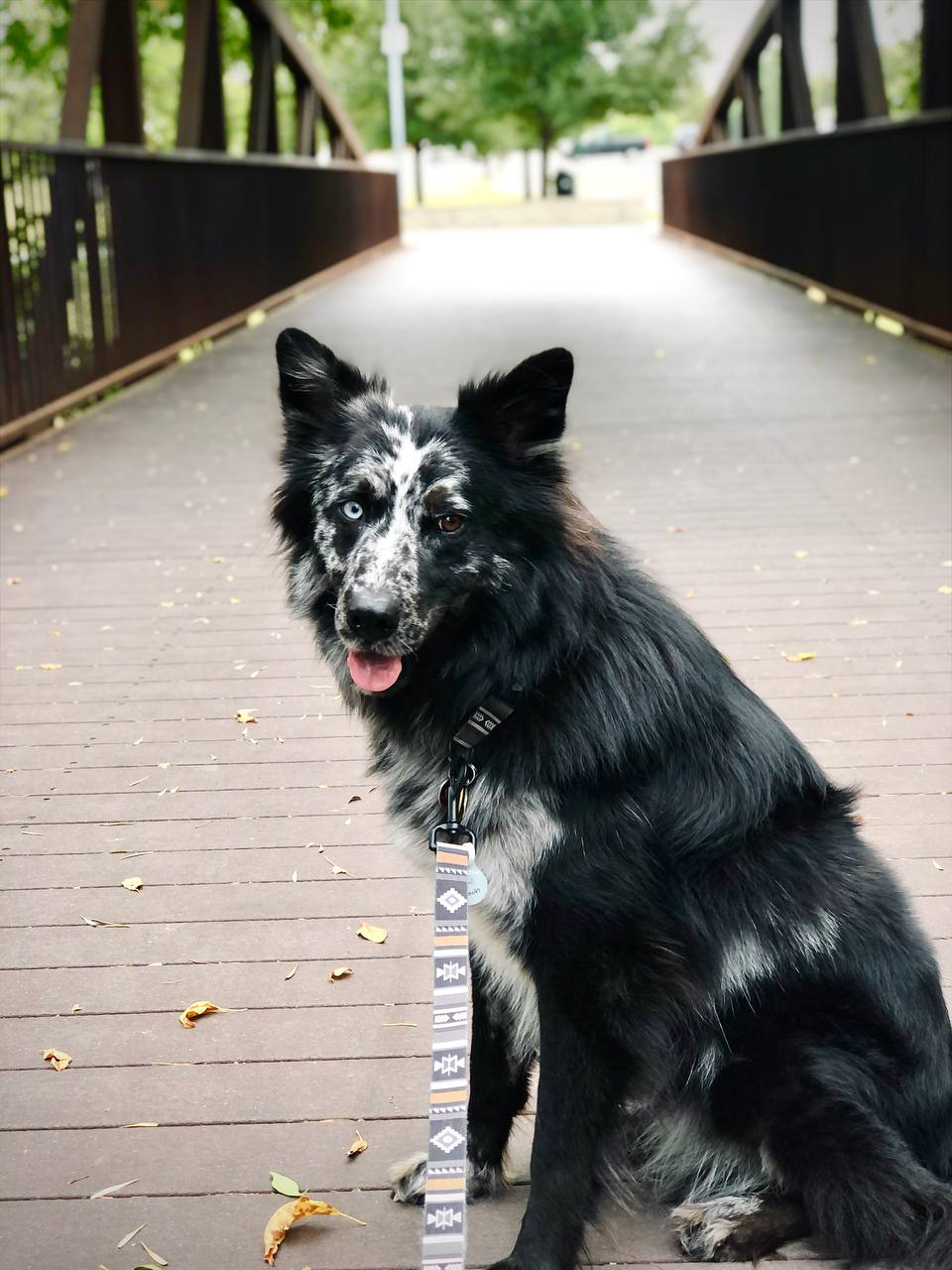Basic Training vs Behavioral Training: Finding "True Balance"
Believe it or not, there are many different types of dog training. When most people talk about getting their dog trained, they often think of it as one general process. However, dog training has evolved into a broad spectrum, so much so that we now need to specify what kind of training we're referring to.
Some examples include:
- Basic Manners
- Agility
- Therapy Dog Training
- Sport Work
- Trick Training
- Behavioral Training
And so much more… Among all these, Basic Training is the most popular.
Yet, dog trainers often see these same dogs back later in life for behavioral issues. Why? Because behavioral training isn’t included in the basics.
So, what is the difference between Basic and Behavioral Training?
Basic Training is exactly how it sounds—teaching foundational commands like Sit, Down, Stay, leash manners, and even "Leave it." It’s like school for your dog. Just as kids learn Reading, Writing, and Math in school, your dog learns basic skills during training. However, much like how schools don't teach kids to say "please" or "thank you," basic training doesn’t inherently teach a dog how to behave in a variety of real-world situations.
Behavioral Training, on the other hand, focuses on cultivating good habits and responses. It's about teaching your dog when to use those basic skills, just like teaching a child when to wash their hands. Behavior is more nuanced—it's learned through experience, routine, and consistency.

The Difference in Action: Behavior vs Basics
Here are a few real-life examples to clarify the difference:
- Behavior: Due to consistent training, every time I approach a door with my dog, he automatically sits and waits for a release cue—whether the door is open or closed.
Basics: My dog knows how to sit, but as soon as the door opens, he rushes through it. - Behavior: When I take my dog to a busy café like Starbucks, he relaxes and calmly lays by my side.
Basics: My dog knows the “down” command, but he’s too excited and distracted to stay down in public. - Behavior: I can take a loose-leash walk with my dog, and I’m not concerned about him being right by my side as long as he’s not pulling.
Basics: My dog pulls for the first ten minutes, and only walks nicely once he’s tired—unless he sees a cat or another person.
The Struggle: Basics Without Application
The challenge most owners face is not knowing how to apply the basics in day-to-day situations. It’s one thing to teach a dog to sit or lie down in a calm environment, but it’s another to expect them to do so in a real-world scenario with distractions.
This is why some people say, "I did puppy classes, but nothing stuck."
Imagine teaching a 4-year-old child how to read or clean up after themselves in just six days. Could you expect them to maintain and consistently apply those skills for the rest of their life without further practice? Probably not.
Now, let’s say you teach that child how to wash their hands, but you never teach them when to do it. They know the skill, but they don’t know when or why it’s important to apply it.
The Importance of Consistency and Application
Dogs are much the same. Just because you teach a dog a skill, it doesn’t mean they automatically know when and where to use it. That’s where consistency and application come into play.
Yes, consistency is important, but you also need to actively practice applying the skills in different situations. A skill like "sit" should be reinforced regularly, and in various environments, so your dog understands it’s not just a trick—it’s a useful behavior.
For example:
- Sit: Use it before going through doors, before getting out of the car, or before feeding. Expect your dog to stay seated until you give them a release cue.
- Leave It: Practice it when your dog tries to jump on someone, when they see a squirrel on a walk, or when they start barking at the mailman. But you must teach them what "Leave it" really means.

Common Misconceptions About Training
Misconception 1: "Once my dog knows 'sit,' I’m done with training."
A lot of people think that once a dog learns basic commands, training is complete. In reality, training is a lifelong process. Dogs, much like people, need continued practice and reinforcement to keep those skills sharp, and they also need to learn how to apply them in different contexts.Misconception 2: "Behavior problems can be fixed with basic training."
Many owners believe that teaching their dog basic commands will solve behavioral issues like anxiety, aggression, or excessive barking. While basics are important, behavioral issues often require a different approach—one that focuses on changing the dog’s emotional response and teaching them self-control.Misconception 3: "My dog is too old to learn."
There’s a myth that older dogs can’t be trained, but that’s simply not true. While puppies might pick up new tricks faster, adult and senior dogs are fully capable of learning new skills and adjusting their behavior. It just requires the right approach and a bit more patience.Misconception 4: "My dog will grow out of bad behavior."
This is one of the most dangerous misconceptions. Behavioral issues rarely improve without intervention. In fact, undesirable behaviors like jumping, pulling on the leash, or barking often get worse over time unless they are addressed with the right training.
How to Combine Basic and Behavioral Training at Home
- Door Manners:
Instead of simply teaching “sit,” practice door manners as a behavioral skill. When approaching a door, ask your dog to sit and wait for a release cue before allowing them through the door. Do this consistently, whether the door is to your house or car. This reinforces both the “sit” command and patience, which is a behavioral trait. - Mealtime Manners:
Before feeding, have your dog perform a “sit” or “down” command and stay until you give them permission to eat. This reinforces impulse control—a key behavioral skill—while strengthening their ability to follow basic commands. - Leash Walking:
Instead of simply expecting your dog to walk nicely on a leash, actively practice this by stopping whenever your dog pulls and rewarding them when they walk without tension. Over time, this will teach them that walking calmly leads to progress, which ties into both behavioral skills and the basic “heel” command. - Distraction Training:
Once your dog knows commands like “sit” or “leave it,” gradually introduce distractions. Practice the “sit” command at the park or outside a busy coffee shop. For “leave it,” use real-world scenarios, like when they spot a squirrel or a passing dog. This helps bridge the gap between training and behavior, making sure your dog applies those skills when it really matters.
Potential Pitfalls to Avoid:
Pitfall 1: Inconsistency
Inconsistency is one of the biggest obstacles to successful training. Dogs thrive on routine and clear expectations. If you allow jumping on the couch one day but scold your dog for it the next, you’re sending mixed signals. Choose your rules and stick to them. Consistency is key for both basic and behavioral training.Pitfall 2: Not Practicing in Different Environments
Dogs are masters of context learning, meaning they might perform a command perfectly at home but struggle when there are distractions. Practice commands in different environments—your yard, at the park, or even in a pet store—to make sure your dog can generalize the skill. Behavioral training is especially important here, as it teaches your dog to respond appropriately no matter the setting.Pitfall 3: Relying Solely on Treats
While treats are an excellent motivator, relying on them every time your dog performs a command can backfire. The goal is to ensure your dog is responding to cues because of the behavior itself, not just for the food reward. Treats are very important in training, and you’ll continue using them throughout your dog’s life, but not for every single behavior.
Over time, you should gradually phase out treats and replace them with other rewards, like praise, toys, or playtime. This helps condition your dog to respond without expecting a treat for every cue. That said, it’s perfectly fine to pull out treats occasionally to keep things fun and maintain your dog’s enthusiasm for training. Remember, we want to motivate our dogs without bribing them for everything, but the occasional treat can keep them fresh and willing to work!Pitfall 4: Not Addressing the Underlying Cause of Behavioral Issues
Many owners focus on the symptoms of behavioral issues (like barking or pulling) without addressing the root cause. For example, a dog that barks at other dogs on walks might be anxious or overstimulated. In this case, behavioral training should focus on calming exercises and building confidence rather than simply teaching a “quiet” command.Pitfall 5: Only relying on Punishment
While punishment can seem like a quick solution for stopping unwanted behavior, relying on it as the primary training method often backfires. Punishment alone doesn’t teach a dog what they should do; it only discourages what they shouldn’t do. This can lead to confusion, anxiety, and even fear in dogs, which may worsen behavior issues over time.
A "true balance" in training means pairing clear boundaries with positive reinforcement, so your dog learns both what behaviors are unwanted and which ones you’re looking for. Punishment without guidance can leave a dog guessing, while balanced training builds trust, confidence, and a stronger bond between you and your dog.
Moving Forward: Finding Balance
To sum up, while your dog may have the basic skills, they may still be lacking the tools to apply them effectively. By incorporating behavioral training into your daily routine, you’ll help your dog develop better habits, and those basic commands will start to stick.
It’s never too late to change old habits and start developing new ones. With a little consistency and a focus on both basic and behavioral training, you’ll be well on your way to a more balanced and well-behaved dog.